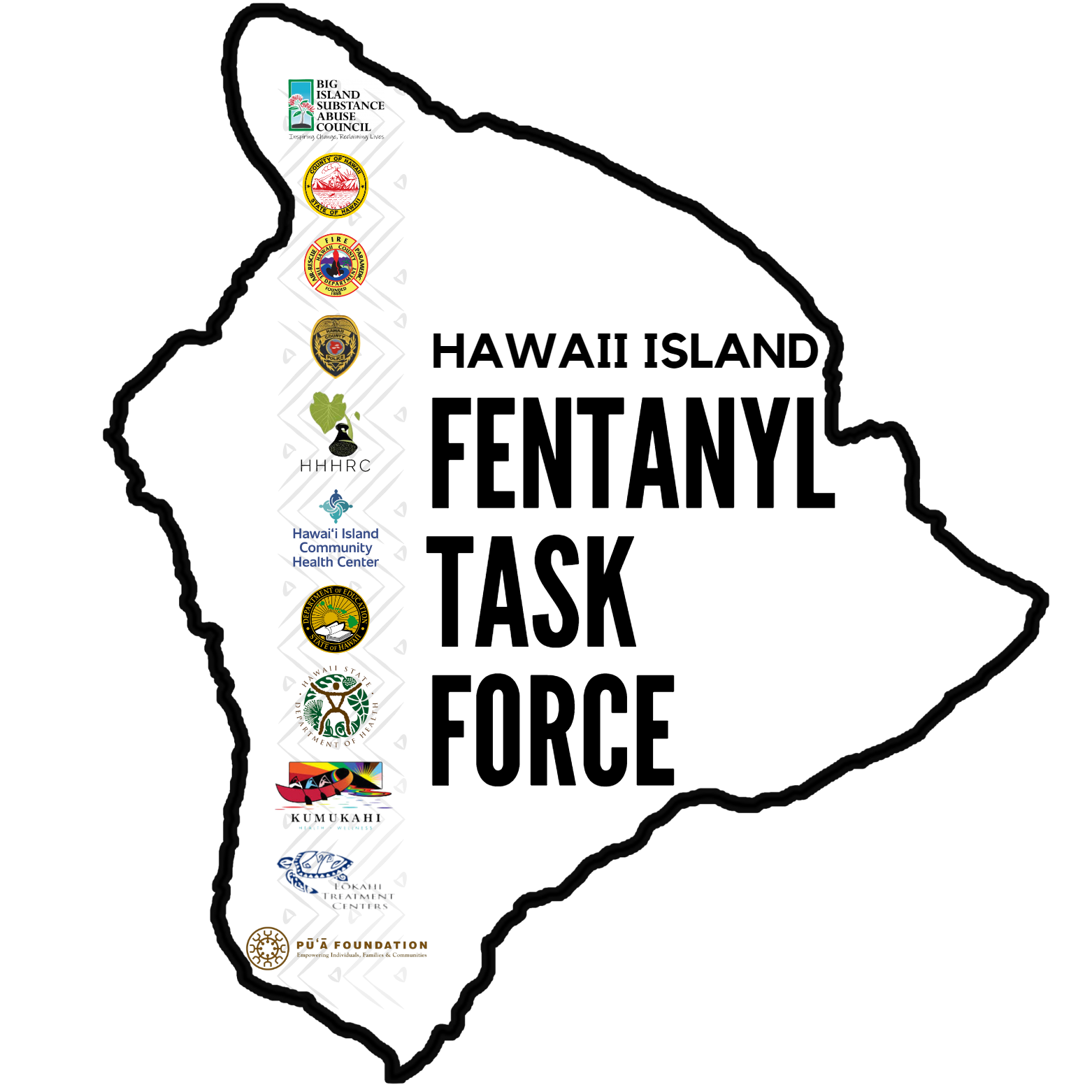OUR PRIORITIES
Dashboard Measures
It is the intention of the Task Force that with the implementation of this strategic plan, we will see the following impacts:
- Decrease in opioid-related fatal overdoses
- Decrease in non-fatal opioid overdoses
- Decrease in emergency room services due to overdose
- Decrease in opioid-related calls to the Hawaii Poison Hotline
- Increase training and availability of Narcan and Fentanyl Test Strips
Priority 1: Education & Prevention
Education & Prevention prioritizes combating the Opioid Crisis through the expansion of education and prevention activities. The goal is to bring awareness of the dangers of drug use and strategies to prevent addiction to everyone on the island above the age of 10.
Priority Objectives
Objective 1: Education and prevention through in-person/zoom trainings, school presentations, community fairs, and annual conferences.
Objective 2: Education and prevention through the media (radio, news, tv, social media, and sign-waving).
Objective 3: Education and prevention through an integrated and interactive website.
Objective 4: Education and prevention through a walk-in service and/or hotline.
Objective 5: Education to key policy decision makers (legislators, mayor’s office, etc.)
We believe in prevention through education. Task Force members and presenters are available to present the “Choose Not to Use” presentation to your group or organization. Want to learn more about our presentation? Click below to find out more...
Priority 2: Screening & Early Intervention
Screening & Early Prevention prioritizes that every point of entry has protocols in place
(i.e.,
SBIRT-
Screening,
Brief
Intervention, and
Referral to
Treatment) for addiction screening and early intervention.
Priority Objectives
Objectives 1: Determine the entry points of where screening and early intervention would occur (i.e., doctors office, prison entry or release, hospital etc.).
Objective 2: Provide an avenue for providing awareness and/or training on screening and brief intervention (SBIRT).
Objective 3: Expand the options of SBIRT expertise to families, churches, sports advocates, and schools.
Priority 3: Treatment Services
Treatment Services prioritizes addressing addiction and mental Illness through the expansion of treatment options on the island. The goal is to increase the array of evidenced-based treatment options for people with addictions and mental health concerns by expanding the network of mental health providers in both informal and formal settings.
Priority Objectives
Objective 1: Recruit and train existing healthcare providers to address substance use disorder with their patients.
Objective 2: Increase telehealth capacity to reach rural areas. Provide technology for low-income families.
Objective 3: Work on getting more treatment beds on island so that people can remain within their communities as they start to heal.
Objective 4: Invest in a wide range of services to meet people where they are at in terms of readiness to quit. This could include ‘damp housing’ and harm reduction that can still engage folks in care before they are totally sober.
HIFTF News Conference Announcing Breakthrough Intervention for Opioid Addiction
Priority 4: Recovery Support
Recovery Support prioritizes enhancing both informal and formal recovery support services in our community. The goal is to ensure people in recovery have the coping skills to deal with daily stressors, craving, dependence, triggers, and are engaged in recovery activities such as joining a support group.
Priority Objectives
Objective 1: Collaborate with treatment providers, inter-faith groups, AA/NA groups, and club houses to ensure that recovery support are available on-island.
Objective 2: Develop and disseminate educational materials to educate the public on how to receive recovery supports on-island and via the internet.
Objective 3: Support the efforts of non-profit and/or grass-roots recovery groups who are seeking funding to help sustain operations.
Objective 4: Support community and peer intervention models (i.e., peer specialists’ programs) that encourage survivors and/or parents of survivors to seek support through shared experiences and planned annual activities (i.e., sign-waving).
If you or a loved one have been affected by an opioid overdose, you are not alone. Here are some links to support groups:
Priority 5: Harm Reduction
Harm Reduction prioritizes advocacy for harm reduction legislation and community initiatives. The goal is to prevent overdose through the use of Narcan and Fentanyl Test Strips and offer low-threshold options for accessing substance use disorder treatment and other health care.
Priority Objectives
Objective 1: Identify which populations are at the highest risk in order to tailor Narcan Training/Distribution and Fentanyl Test Strips Distribution.
Objective 2: Educate legislators on making Narcan available in County and State facilities.
Objective 3: Educate legislators on making Fentanyl Test Strips legal and available.
Objective 4: Post-overdose outreach teams to engage people who have survived a non-fatal OD and link them to care.
Objective 5: Engaging with the criminal justice system to develop drug assessment protocols for diversion and/or community re-entry.
Priority 6: Data Analysis & Evaluation
Collaborate with Treatment Providers, County, and State partners to enhance the ability to identify in real time key data points such as overdose deaths, high utilizers of emergency room services due to overdose, administration of Narcan and lives saved and where, calls made to the poison center due to opioid poisoning, and other types of surveillance tracking.
Priority Objectives
Objective 1: Track opioid-related fatal overdoses.
Objective 2: Track non-fatal opioid overdoses.
Objective 3: Track high utilizers of emergency room services due to overdose.
Objective 4: Track opioid-related calls to the Hawaii Poison Hotline.
Objective 5: Track EMS/Police patients treated with Narcan.
Objective 6: Provide evaluation summaries to the Task Force on a quarterly and/or annual basis.
HELP US COLLECT DATA ON OPIOID OVERDOSES/NARCAN USE







